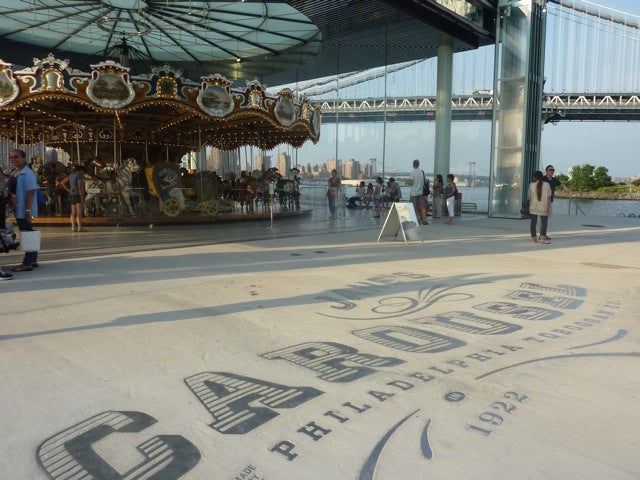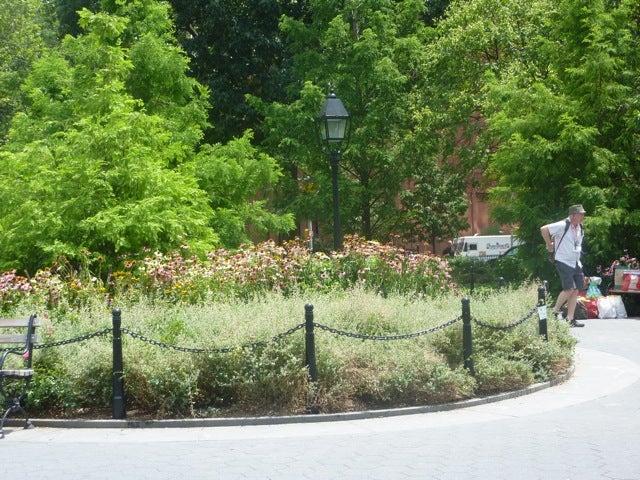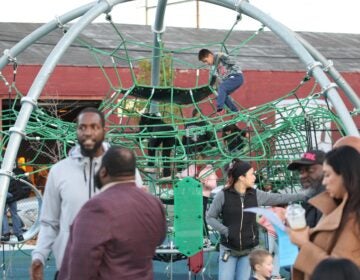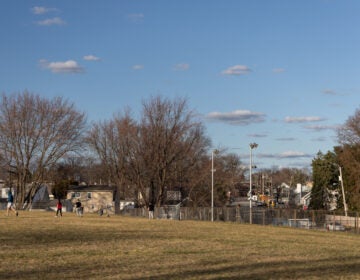Philly shines at City Parks Alliance Conference
Hundreds of urban park officials and advocates from across the country gathered in New York City these past few days to sample the city’s park renaissance and to share their own success stories. The conference, “Greater and Greener: Re-imagining Parks for 21st-Century Cities,” was the first for the 12-year-old City Parks Alliance since 2008’s Pittsburgh meeting.
I roamed the floors of NYU’s Helen and Martin Kimmel Center for University Life on Monday and Tuesday, where speakers at several panels included a goodly sampling of Philadelphians.
Because sessions were held concurrently, I didn’t get to see everyone — Lauren Bornfriend of the Philadelphia Parks Alliance was slated to speak on mobilizing for political power, as was Maitreyi Roy of the Pennsylvania Horticultural Society on community gardens and urban agriculture, and Mary Tracy of Scenic America on armoring against land grabs. I opted to check out what the highest honchos had to say.
Allthough the schedule was packed with explorations of design, sustainability, and programming, much of our city’s top participants seemed to lean on — or were invited to — sessions that skewed to the hard stuff. Here’s what I heard:
On Monday, a tie-less Deputy Mayor Michael DiBerardinis, was in firebrand mode as he joined Yvette Bowden of the nonprofit Piedmont Conservancy in Atlanta and New York City Councilman Brad Lander to tackle the issue of “Creating An Equitable Funding Infrastructure for Parks.” Although the three gave examples of how their parks had leveraged public-private partnerships, they admitted, to use the words of DiBerardinis, that “questions of equity and fairness really follow class lines.”
The leaders suggested that partnering with other organizations — from water departments to neighborhood groups — was an essential strategy, as was continuing to hammer home the message that parks do a lot of economic and social heavy lifting for cities.
When the talk turned to selling off parkland as a way to raise money, Councilman Lander referred to a deal that had occurred when the New York Yankees wanted to build a new stadium on adjacent parkland. In return, the city demanded a “heavy investment” from the team in other parks. Such a deal would probably never fly in the Big Scrapple, DiBerardinis opined. “There’s a high sensitivity in Philadelphia about disposing of any parkland,” he said, but he didn’t take the opportunity to share insights about the city’s recently adopted land protection ordinance.
In general, DiBerardinis centered his remarks on the conservation movements of the 20th century and ended by suggesting that we are now on the cusp of another such “renaissance.” “We have to build on that,” he said, adding that just as the labor and women’s movements didn’t just happen, neither would this one.
At lunchtime in Washington Square Park across the street, I ran into Nancy Goldenberg, chair of the Philadelphia Parks and Recreation Commission and vice president of planning for the Center City District. A veteran of such conferences, she took up where DiBerardinis had left off. “There’s a lot of visionary stuff being discussed,” she said, “but for me the most astounding part so far has been to see how much this has grown. There’s a lot of us out there, I don’t feel that I’m doing this alone, anymore.” (Indeed, organizers noted that at 850 attendees, this has been the biggest conference yet.) Goldenberg mentioned that she was most interested this time around in the track related to funding, since securing the remaining funding for Dilworth Plaza is a top priority at the CCD.
Kathleen Muller, who works in DiBerardinis’ office as director of strategic initiatives, on the other hand, said she was focusing on partnering opportunities to forward the department’s youth services initiatives. She said she’d been particularly inspired by the remarks of Mickey Fearn of the National Parks Service, with whom the Department has previously met. “He really understands that youth, particularly minority youth, need these kinds of opportunities,” she said, referring to programs designed to develop volunteer stints into eventual careers such as recreation, foresting, and environmental education.
During other casual conversations, attendees from other parts of the country seemed conversant with various Philadelphia parks-related successes (such as its stormwater programs) and some expressed the idea that a conference in Philly would be appealing. When I mentioned the idea to City Parks Alliance executive director Catherine Nagel at Monday evening’s Brooklyn Bridge Park party, she said the time might be right for another conference in two years, but noted that perhaps a visit to the west coast was in order.
On Tuesday morning, Center City District president and CEO Paul Levy joined Doug Blonsky, president and CEO of the Central Park Conservancy, and Nancy Brenner, executive director of Boston’s Rose Fitzgerald Kennedy Greenway Conservatory, for a look at “An Emblem of the Times: Public-Private Partnerships.” Levy fine-tuned what’s become his standard presentation on the BID’s impetus, evolution, and successes to focus specifically on its recent morphing into parks and place management. “There are over 1,000 organizations like ours in North America, so I encourage you to consider them as partners,” he told his audience of parks people.
Once the CCD had tackled standard BID fare like safety, cleanliness, downtown living and amenities, the move to a larger arena seemed natural, he pointed out, especially in a city like Philadelphia which is one of the few (Savannah’s another) to boast an original master plan centered on parks. After all, he added, William Penn’s five squares are the basis of CCD’s logo.
Levy summed up CCD’s work thus far on parks — the creation of the Cret Cafe on the Parkway, the restoration of Chestnut (John Collins) Park, and the redesign of Sister Cities Park — and concluded with the fact that the organization’s biggest such project, the $50 million Dilworth Plaza reconstruction, was next.
Brenner — whose park was created as one offshoot of the infamous Big Dig — struck some downer notes, both on the relationship between pubic and private interests, and on the mistake of assuming immediate success would come to such developments. “Even though [the site] was in the middle of downtown, we had to reintroduce the place,” she said. “It just was not on anyone’s mental map,” she added, casting a rather pointed glance at Levy, who seemed not to notice. (In any event, the comparison isn’t really an apt one: the Boston site does not share the same central situation as Dilworth, it’s poised on the edge of the financial district)
During the question and answer period, Levy emphasized the importance of convincing municipalities to give up some controls, and of relinquishing “false distinctions between parks and real estate development.” Commercial amenities and business attraction strategies can be part of the parks funding equation, he said.
Finally, I sat in on a session that sounded particularly dry — even though it involved water — but which turned out to be most interesting. Moderated by Philadelphia Parks and Recreation first deputy Mark Focht, “Working With Water Departments: From Capturing Raindrops to Decking Reservoirs” presented just two panelists, Mami Hara, chief of staff of the Philadelphia Water Department and Michael Shiosaki, planning and development director for Seattle Parks and Recreation. Even outgoing New York parks commissioner Adrian Benepe sat in.
Hara offered a summation of Philly’s 25-year, $1.2 billion initiative “Green City, Clean Waters” which, she said, incorporates alternatives — rain gardens, pervious streets, etc. — to the “gray” methods (like tunnel building) more typically used for stormwater management. Extensive and continuing partnerships with Parks and Rec, she and Focht pointed out, are helping both agencies meet their respective goals.
Shiosaki’s presentation dealt with a totally different kind of parks-water partnership: the “capping” or covering of its eight municipal reservoirs to create 76 acres of new parkland. This would have been a perfect jumping off point to explore Philadelphia’s own pioneering reservoir system but, as is so often the case, the clock was ticking and the session came to close.
Oh well, maybe next time in Philadelphia?
Contact the reporter at jgreco@planphilly.com and follow her on Twitter @joanngreco
WHYY is your source for fact-based, in-depth journalism and information. As a nonprofit organization, we rely on financial support from readers like you. Please give today.








